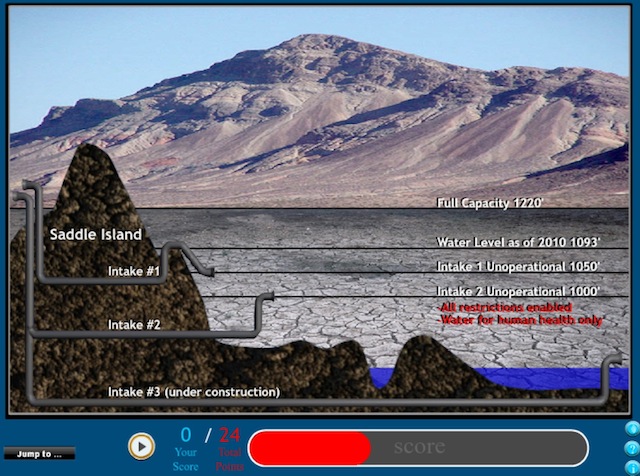High good, low bad: Mead in February 2012
Posted on | February 29, 2012 | No Comments
According to the federal Bureau of Reclamation, Lake Mead’s much-watched waters were lapping at roughly 1,133.09 feet on this Leap Year evening, when a post normally reserved for March 1st had to be done early in order to be on the road. As levels go, it’s better than last year’s of 1,095.76 and worse than most since February records began in the 1930s. At an admittedly hasty glance, over the intervening three quarters of a century, elevations were only lower from 1935-38, 1955-57, 1964-66, 1968 and 2007-11. The first set of low readings has little to do with scarcity. The lake was filling after the construction of Hoover Dam. The mid-century dips looks like they at least in part reflect construction of the Glen Canyon Dam upstream. The third announces a prevailing drought on the Colorado River combined with ever-increasing demand on a river that Reclamation describes as “over-allocated” between water users in seven US states, tribes and Mexico. Ah, and nature. The total “system contents” are calculated at 67%.
Leaving aside lower-than-ideal snowpack building around the river’s headwaters this year — there’s always room for hand-wringing about that later — this seems the moment to repost a University of Nevada teaching game spotted by the eagle-eyed Michael Campana at WaterWired several weeks ago. In it, players/students are quizzed on their knowledge about the river system and invited to play water manager. The origin of the game being Nevada, the test is rigged. A key segment of the quiz for stretching the supplies of the hypothetical Lake Mead does not allow for curbing population growth in the dry West as a water management tool.
And so the not-so-subtly gamed take-home point seems to insist that more water will be needed, presumably from the Great Basin Aquifer and delivered through a proposed and controversial Las Vegas pipeline. Critics of the pipeline see Vegas’s problem as not a question of inadequate water but non-existent town planning. A real world decision by the Nevada State Engineer charged with granting or denying groundwater for Las Vegas from four rural valleys is expected in March.
Tags: Colorado River > elevations > Lake Mead > University of Nevada
Comments
Leave a Reply



